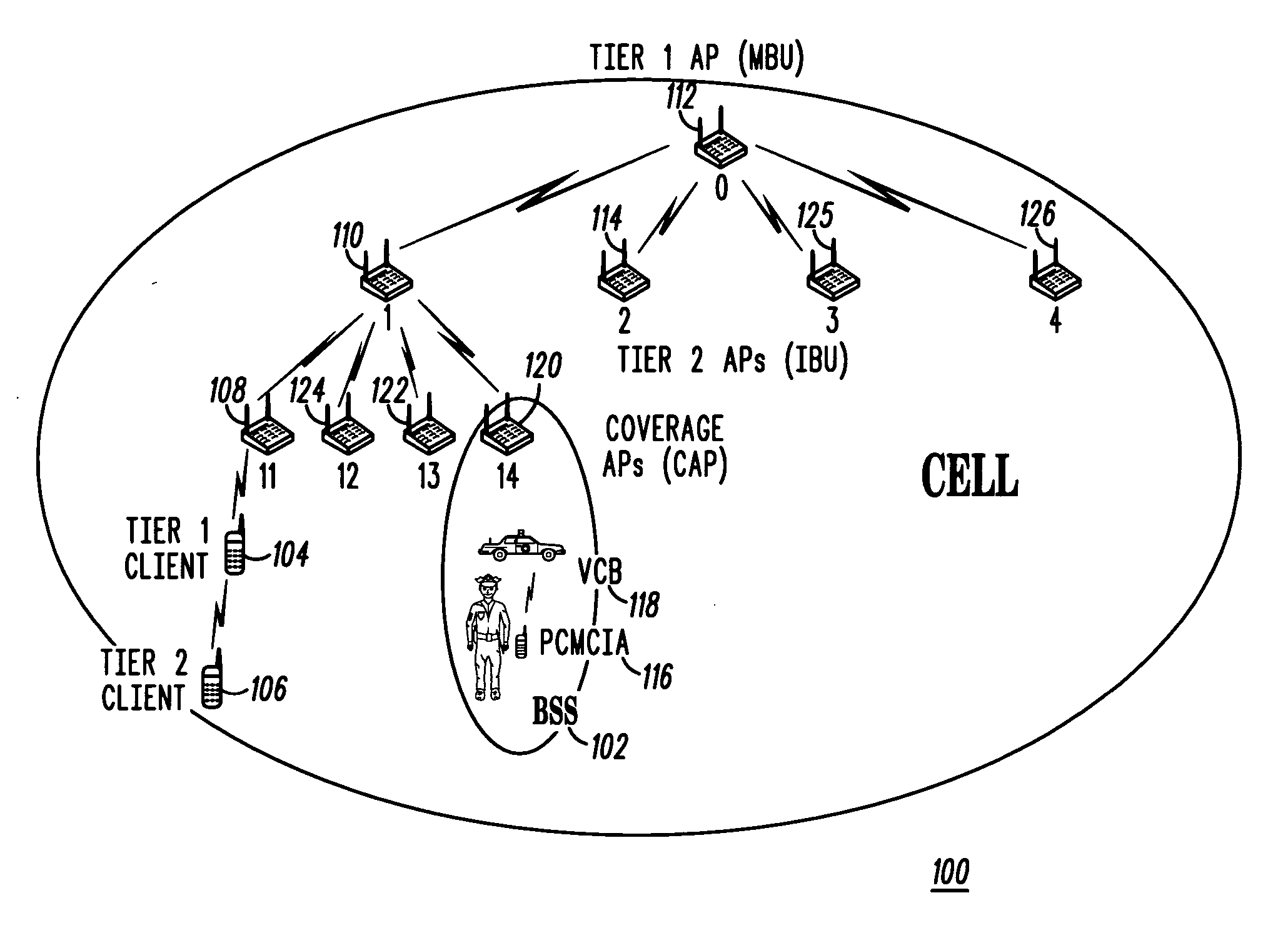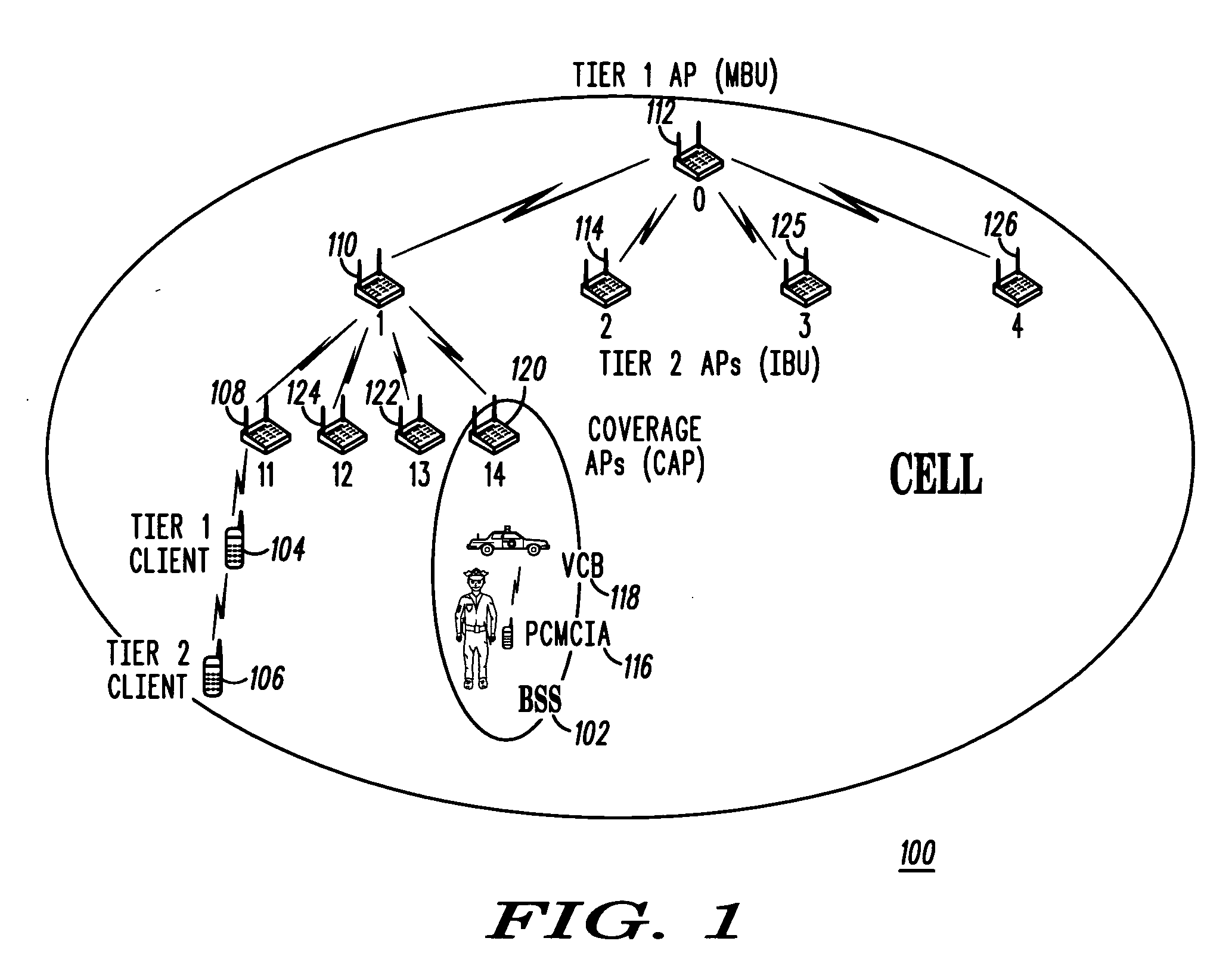Method for performing neighbor discovery in a multi-tier WLAN
a multi-tier, wireless local area network technology, applied in the field of wireless communication systems, can solve the problems of unnecessary collision or waste of wireless local area network capacity, limited power and storage capacity, and active scan not allowing clients to determine neighboring clients
- Summary
- Abstract
- Description
- Claims
- Application Information
AI Technical Summary
Problems solved by technology
Method used
Image
Examples
Embodiment Construction
[0013] An embodiment of the present invention is described with reference to FIG. 1. Shown in FIG.1 is a multi-tier wireless local area network (WLAN) 100. The invention may be thought of as a multi-tier WLAN and / or be embodied in a multi-tier WLAN. The WLAN is termed multi-tier to specify that there are multiple tiers of nodes, e.g. multiple tiers of access points (APs) and / or multiple tiers of clients, where a node is a well known term in the art and means a client or an access point. On the AP side of the multi-tier WLAN communications hierarchy, a single AP 112 communicates with APs in a second tier 110, 114, 125, 126. In an exemplary embodiment, the tier 1 AP 112 is termed a master backhaul unit (MBU) and provides communications to a wired network (not shown). As shown in FIG. 1, the second tier APs 110, 114, 125, 126 communicate with coverage APs and are termed intermediate backhaul units (IBUs). Although only two tiers of APs are shown in FIG. 1, many more tiers of APs may ex...
PUM
 Login to View More
Login to View More Abstract
Description
Claims
Application Information
 Login to View More
Login to View More - R&D
- Intellectual Property
- Life Sciences
- Materials
- Tech Scout
- Unparalleled Data Quality
- Higher Quality Content
- 60% Fewer Hallucinations
Browse by: Latest US Patents, China's latest patents, Technical Efficacy Thesaurus, Application Domain, Technology Topic, Popular Technical Reports.
© 2025 PatSnap. All rights reserved.Legal|Privacy policy|Modern Slavery Act Transparency Statement|Sitemap|About US| Contact US: help@patsnap.com



